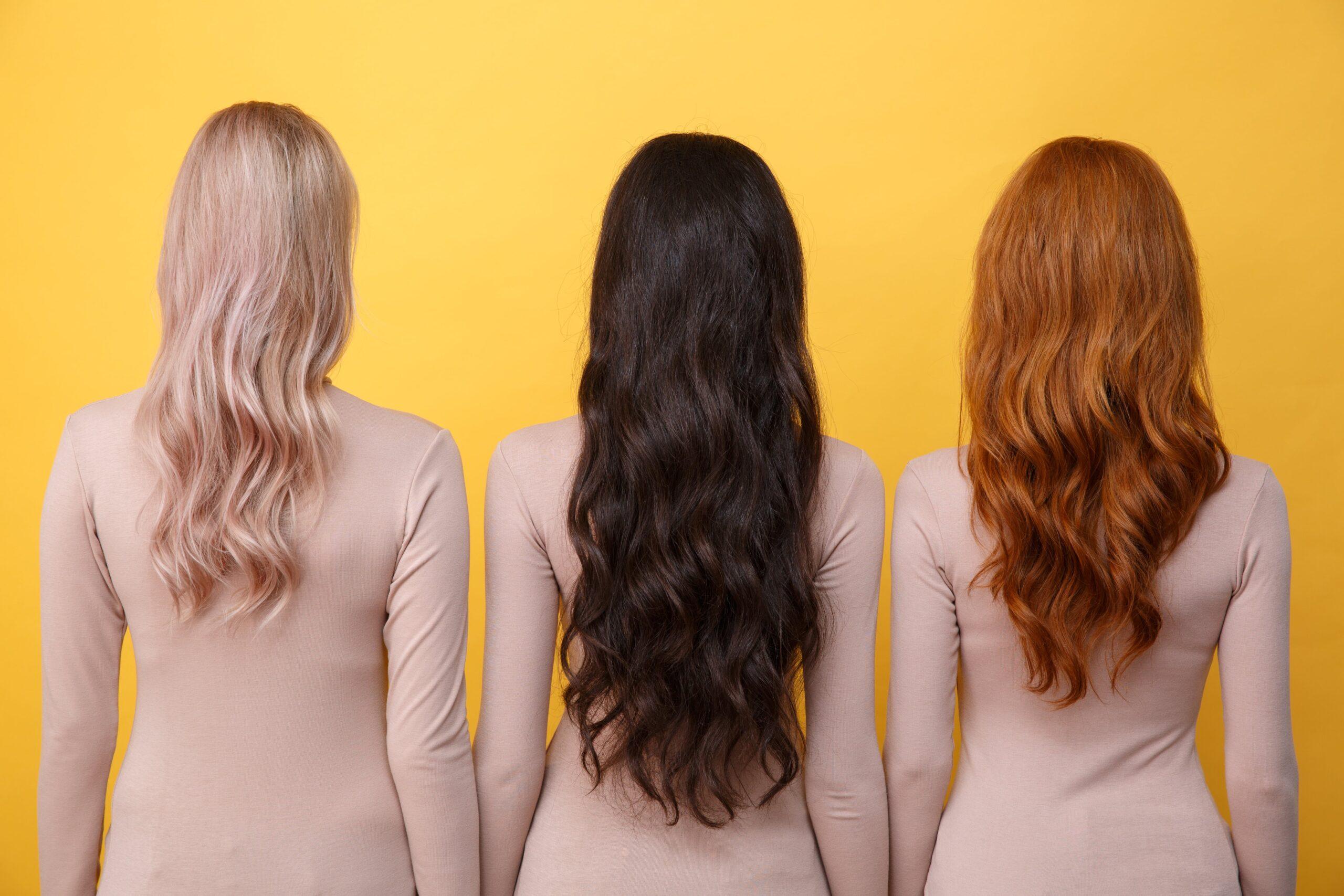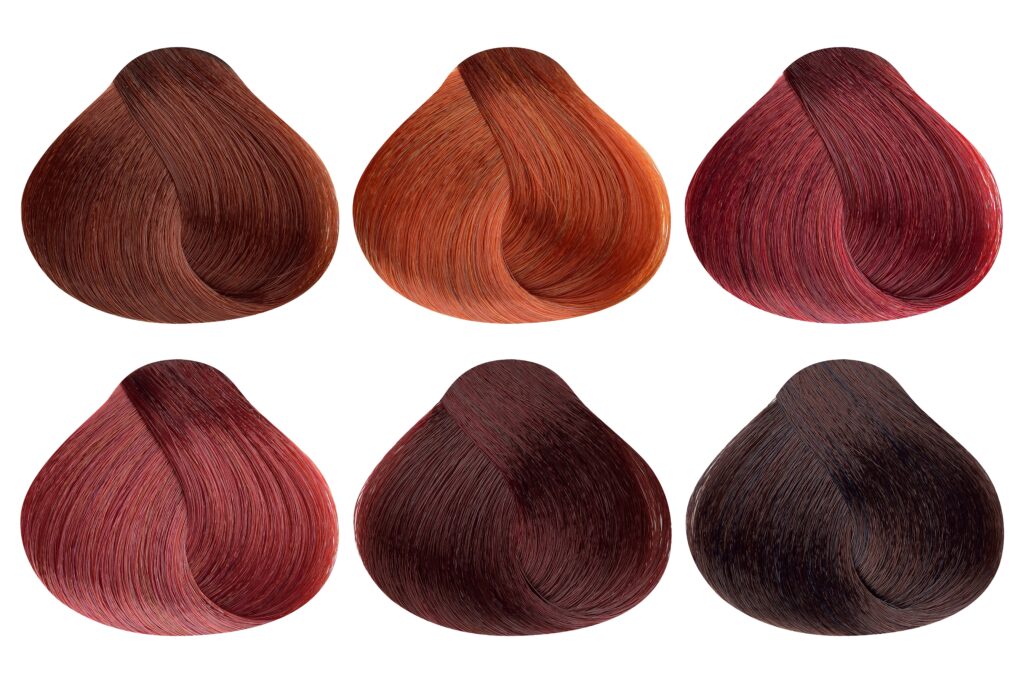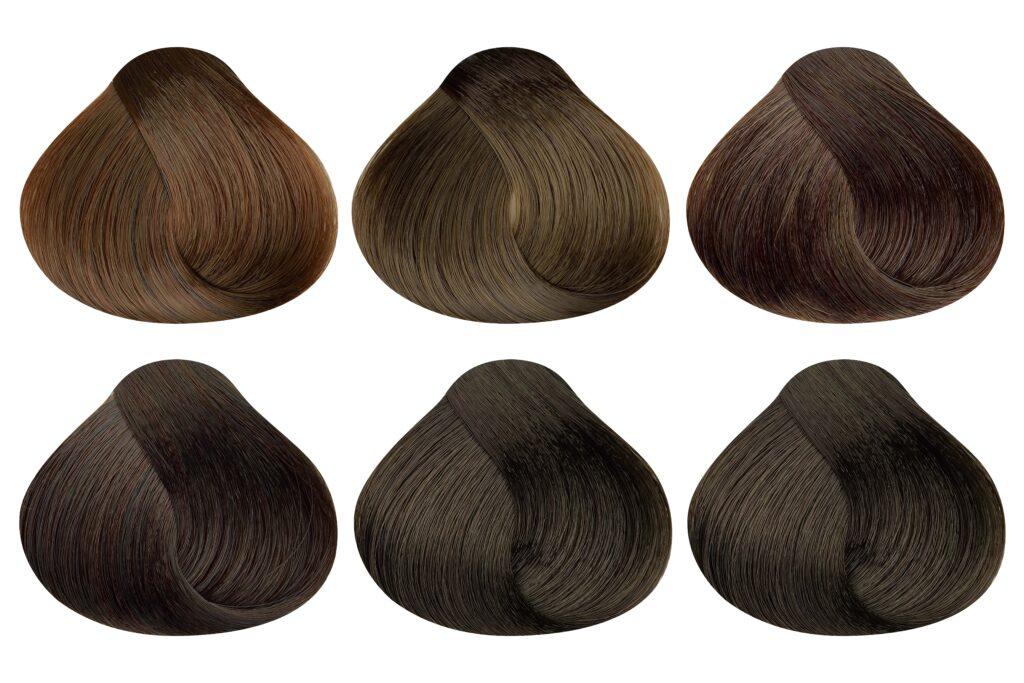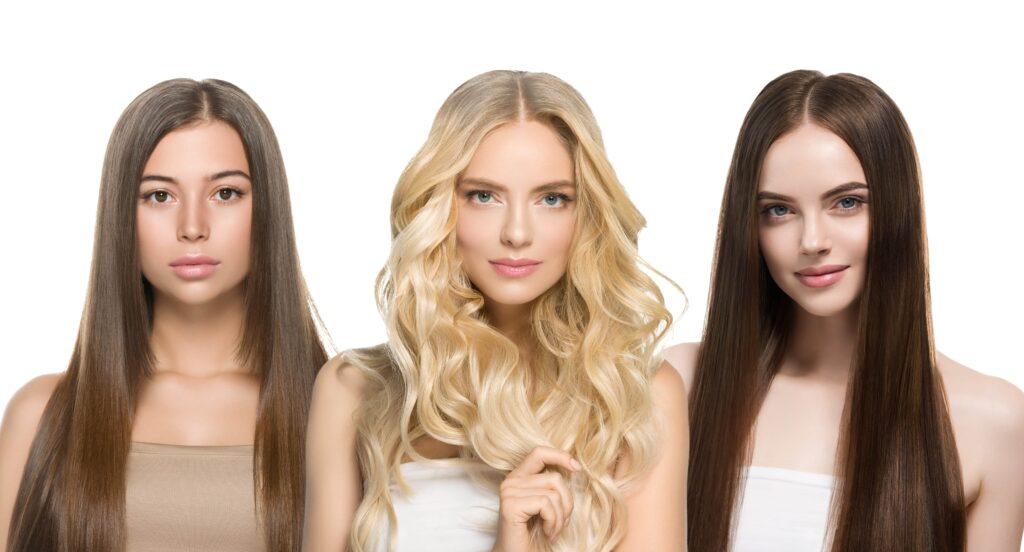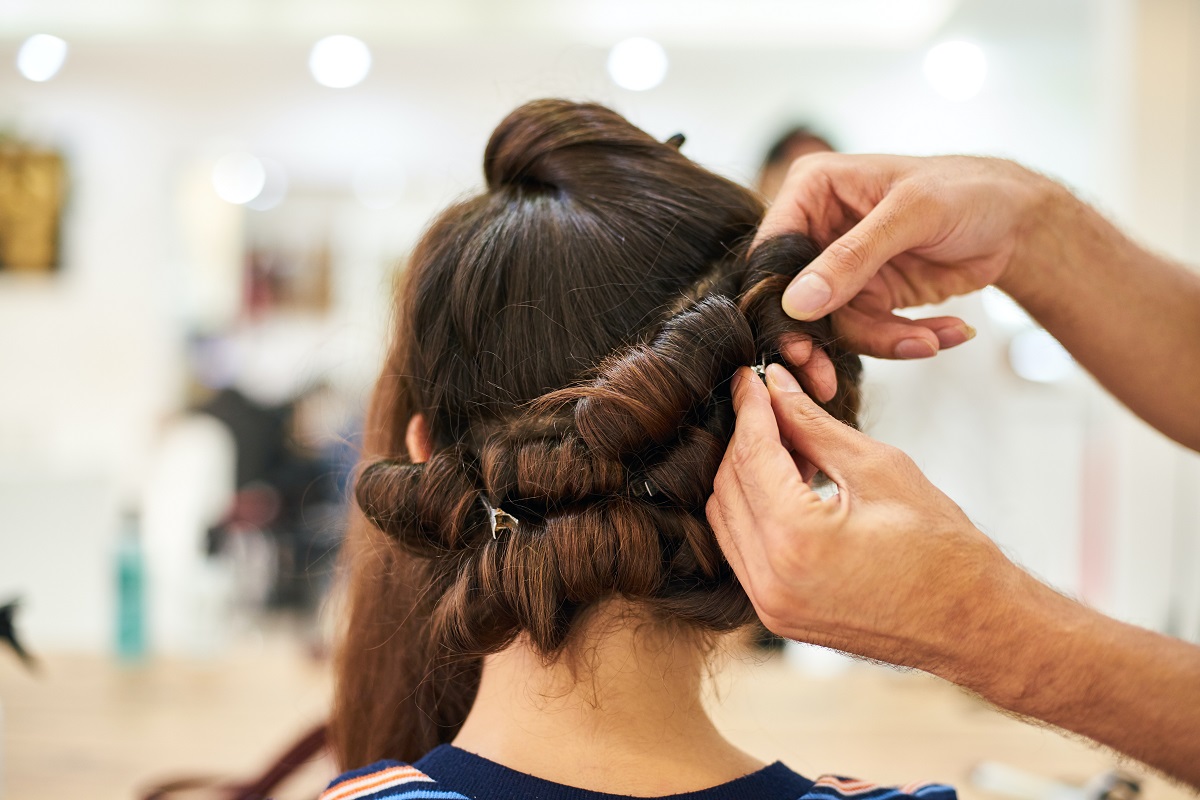Have you ever wondered what the numbers on a hair color chart 1 to 10 mean? The hair color numbering system is an essential aspect of coloring hair with box dyes, and understanding it can help you achieve your desired blonde shade or various shades.
The first number in a hair color chart represents the depth or darkness of the shade, which can vary from deep brown to lightest blonde. The second number indicates the tone or hue, which is determined by the base colour and skin undertones. The tones range from cool (ashy) to warm (golden), providing various shades to choose from.
Understanding this system is crucial because choosing the wrong box dye or fashion colors can lead to disastrous results. It’s essential to consider factors such as skin tone, natural hair color, and base color when selecting a shade with violet tones.
By knowing how to read a hair color chart, you can make informed decisions about your hair. Whether you’re using box dye or salon dyes, understanding the blonde shade and base colour is important. So let’s dive into the world of hair color numbers and charts!
The Importance of Choosing the Right Shade for Your Skin Tone and Complexion
Choosing a hair color can be a daunting task, especially with so many shades of colour and dyes to choose from. However, it’s essential to pick the right shade based on your skin tone and complexion. Here are some tips to help you choose a flattering hair color that complements your skin, whether you prefer blondes or orange tones.
How Skin Tone Affects Hair Color Choice
Your skin tone plays a significant role in determining which hair color will look best on you. The three primary skin tones are cool, warm, and neutral. If you have cool undertones, you’re likely to have pink or blue undertones in your skin.
Warm undertones indicate yellow or peachy tones in your skin, while neutral means that there’s no obvious overtone of pink or yellow. Choosing the right colour to dye your hair can result in radiant results that complement your skin tone perfectly. It’s important to consider numbers when selecting a hair dye shade to ensure it matches your skin undertones.
Identifying Your Skin Tone and Complexion
Identifying your skin tone is crucial when choosing the right hair color. Here’s how to determine yours for a perfect colour match: check the radiant results of hair dye on people with similar numbers in skin tone.
- Look at the veins on the inside of your wrist; if they appear blue or purple, you have cool undertones which can be helpful in determining your hair color levels. By using the hair color wheel, you can find the perfect hair colour that suits your cool undertones. If your veins look greenish, it means you have warm undertones which can be complemented with secondary colors in the hair color wheel.
- Hold up a white piece of paper next to your face; if your complexion looks pink or rosy against the white background, then you have cool undertones that can be matched with your hair color wheel. If it appears yellowish against the white background, then you have warm undertones that can be matched with your hair colour. This color match is based on your natural base color.
- Another way to determine your skin undertone is by looking at what colors flatter you most, taking into consideration your hair color. If warm hues like oranges and yellows complement your complexion and hair dyes better than cool tones like blues and greens, then you likely have warm skin. By choosing the right colors that match your skin and hair tone, you can achieve radiant results.
Tips for Choosing a Flattering Hair Color Based on Skin Tone and Complexion
Once you’ve identified your skin tone and complexion type, here are some tips for choosing a flattering hair color: To achieve radiant results, consider the right colour dye that matches your numbers.
For Cool Undertones
If you have fair skin with cool undertones:
- Opt for shades like platinum blonde, ash blonde, and light brown that complement your hair tone. Check out hair color charts to determine the right hair colour levels for you.
- Avoid warm shades like golden blonde or caramel.
If you have medium complexions with cool undertones:
- Choose shades like honey blonde, chestnut brown, and auburn.
- Avoid red shades that are too bright or orangey.
If you have dark skin with cool undertones:
- Go for deep browns like chocolate and espresso.
- Avoid shades that are too light or ashy.
For Warm Undertones
If you have fair skin with warm undertones:
- Choose shades like golden blonde, copper reds, and strawberry blonde to complement your hair tone. Experiment with different hair colour levels to find the perfect match for your brown hair color.
- Avoid colors that are too cool-toned or ashy.
If you have medium complexions with warm undertones:
- Opt for hair dye shades such as caramel highlights, golden brown, and copper-red tones to complement your hair colour. Consider blonde hair color and the different hair color levels to find the perfect match.
- Avoid colors that are too dark or too light.
If you have dark skin with warm undertones:
- Consider deep browns with reddish hues or mahogany highlights.
- Avoid colors that are too light or ashy.
Hair Color Depth And Hair Color Chart 1 to 10
When selecting a hair colour based on your skin tone, it’s crucial to take into account both the undertones and the depth of the colour. The right hair colour can complement your complexion type and enhance your natural beauty, so it’s essential to choose a shade that’s within a few numbers of your natural colour.
Understanding Hair Color Levels: From 1 (Black) to 10 (Lightest Blonde)
What are Hair Color Levels?
Hair color levels refer to the depth or darkness of hair color, which is represented by numbers from level 1 (black) to level 10 (lightest blonde). The hair color chart is a useful tool that helps hairstylists and individuals determine the right shade of colour for their desired result.
Definition of each Level in the Hair Color Chart
Each level in the hair color chart has a specific depth or darkness, represented by colour and numbers, as follows:
- Level 1 – Black: This is the darkest shade of hair color. It appears black with no visible undertones.
- Level 2 – Darkest Brown: This shade appears very dark brown and may have slightly visible red undertones.
- Level 3 – Dark Brown: This shade appears dark brown and may have visible red undertones.
- Level 4 – Medium Brown: This shade appears medium brown with warm red undertones.
- Level 5 – Light Brown: This shade appears light brown with warm red undertones.
- Level 6 – Dark Blonde: This shade appears dark blonde with golden undertones.
- Level 7 – Medium Blonde: This shade appears medium blonde with golden undertones.
- Level 8 – Light Blonde: This shade appears light blonde with pale yellow undertones.
- Level 9 – Very Light Blonde: This shade appears very light blonde with pale yellow undertones.
- Level 10 – Lightest Blonde: This is the lightest shade of blonde. It appears almost white.
Examples of Each Level
Here are some examples of each level in the hair color chart, classified from 1 to 10:
Level 1 (Black):
- Blue-black
- Jet black
Level 2 (Darkest Brown):
- Espresso
- Dark chocolate
Level 3 (Dark Brown):
- Chestnut brown
- Dark auburn
Level 4 (Medium Brown):
- Golden brown
- Caramel brown
Level 5 (Light Brown):
- Light golden brown
- Honey brown
Level 6 (Dark Blonde):
- Ash blonde
- Golden dark blonde
Level 7 (Medium Blonde):
- Sandy blonde
- Butter blonde
Level 8 (Light Blonde):
- Champagne blonde
- Beige blonde
Level 9 (Very Light Blonde):
- Platinum blonde
- Silver blonde
Level 10 (Lightest Blonde):
- Icy platinum blonde
- Pearl blonde
How to Determine Which Level is Suitable for Your Desired Result?
When choosing the right hair color level, it’s essential to consider your skin tone and natural hair color. If you have darker skin, you may want to opt for warmer tones, while those with lighter skin can pull off cooler tones.
If you’re looking for a drastic change, going more than two levels lighter or darker than your natural hair color may not be suitable.
Exploring the Different Tones in Hair Color: Warm, Cool, and Neutral
Hair color is a crucial aspect of fashion, beauty, and personal style. It can enhance your features, complement your skin tone, and express your personality. However, choosing the right hair color can be tricky because it involves many factors such as skin undertones, eye colors, natural hair tones, and personal preferences.
One of the essential elements to consider when selecting a hair color is the tone. Hair tones refer to the warmth or coolness of a shade based on its underlying pigments. They are categorized into three main categories: warm tones, cool tones, and neutral tones.
Definition of Warm, Cool, and Neutral Tones
Warm tones have red or yellow undertones that create a sense of warmth in hair colors. They range from golden blonde shades to deep brown hues with copper or red highlights. Some examples of warm-toned colors include honey blonde, caramel brown, chestnut brown with red highlights.
Cool tones have blue or violet undertones that give hair a cooler or ashier appearance. They range from icy platinum blonde to jet black hues with blue or purple highlights. Some examples of cool-toned colors include ash blonde or brown shades and burgundy reds.
Neutral tones have an equal balance between warm and cool pigments that create natural-looking hues without any dominant undertone. They range from beige blondes to medium brown shades with subtle highlights that blend seamlessly with natural hair colors.
Examples of each tone with corresponding shades
Here are some examples of different hair color shades for each tone:
Warm Tones
- Golden Blonde
- Honey Blonde
- Strawberry Blonde
- Copper Red
- Auburn Brown
- Chestnut Brown
Cool Tones
- Ash Blonde
- Platinum Blonde
- Silver Gray
- Blue Black
- Burgundy Red
- Jet Black
Neutral Tones
- Beige Blonde
- Light Brown
- Medium Brown
- Dark Brown
How to identify which tone complements your skin undertone
Choosing the right hair color tone that complements your skin undertone can make a significant difference in how you look. Here are some tips on how to determine your skin undertone and which hair color tones suit them best:
Cool Undertones
If you have cool undertones, your skin has pink, red, or blue hues with no yellow or green tint. You may also have blue or green eyes and natural ash blonde or brown hair. The best hair colors for cool undertones are cool-toned shades such as platinum blonde, ash brown, burgundy reds, and black.
Warm Undertones
If you have warm undertones, your skin has yellow, peachy, or golden hues with no pink or blue tints. You may also have brown or hazel eyes and natural golden blonde or brown hair. The best hair colors for warm undertones are warm-toned shades such as honey blonde, caramel brown, copper reds, and chestnut browns.
How to Choose the Right Level and Tone for Your Desired Result
Factors to consider when choosing a level and tone
Choosing the right hair color can be a daunting task, especially if you are not sure what level or tone will suit you best. There are several factors to consider when selecting the perfect shade that will complement your skin tone and natural hair color.
One of the most important factors is your primary tone. This refers to whether your skin has warm or cool undertones. If you have warm undertones, you should opt for hair colors with golden, copper, or reddish tones. Cool undertones look great with ashy or cooler shades like platinum blonde, ash brown, or black.
Another factor to consider is your natural hair color. If you have naturally light-colored hair, it’s easier to achieve radiant results with lighter shades like blonde or light brown. On the other hand, darker natural hair colors require more effort to lighten up.
Tips for selecting a complementary combination based on natural hair color and skin undertone
When selecting a complementary combination based on your natural hair color and skin undertone, there are some tips that can help guide your decision:
- Determine whether you have warm or cool undertones in your skin by looking at the veins in your wrist. If they appear greenish, then you have warm undertones; if they appear bluish, then you have cool undertones.
- For warmer-toned skin with lighter natural hair colors (levels 6-10), choose shades like honey blonde (level 8), golden brown (level 6), copper red (level 7).
- For warmer-toned skin with darker natural hair colors (levels 1-5), choose shades like dark chocolate brown (level 4), mahogany red (level 5), cinnamon brown (level 3).
- For cooler-toned skin with lighter natural hair colors (levels 6-10), choose shades like platinum blonde (level 10), ash brown (level 6), cool beige blonde (level 9).
- For cooler-toned skin with darker natural hair colors (levels 1-5), choose shades like jet black (level 1), blue-black (level 2), espresso brown (level 4).
Common mistakes when choosing a level or tone
Choosing the wrong level or tone can lead to disastrous results. Here are some common mistakes to avoid:
- Going too light: If you have naturally dark hair, going too light can result in brassy or yellow tones that look unnatural.
- Choosing a color that is too warm or cool: It’s essential to select a shade that complements your skin undertone. Choosing the wrong tone can make your skin look sallow or washed out.
- Ignoring maintenance: Some hair colors require more maintenance than others. Before selecting a shade, consider how often you’re willing to touch up your roots and whether you want to commit to regular salon visits.
Example of how to use levels and tones for desired results
Suppose you have warm-toned skin with natural dark brown hair (level 4).
Tips for Achieving a Natural-Looking Hair Color
Techniques for achieving natural-looking results with at-home coloring kits
Coloring your hair at home can save you time and money, but it’s essential to know how to achieve a natural-looking hair color. Here are some techniques that will help you achieve the perfect shade:
- Start with your current hair color: Before choosing a new hair color, consider your current hair shade. If you’re not sure which color is best for you, stick with a natural shade that complements your skin tone.
- Choose the right product: Choose a high-quality hair dye that matches your desired shade. Look for products that contain nourishing ingredients such as keratin and argan oil.
- Follow instructions carefully: Always read the instructions on the box before starting. Follow them precisely to avoid mistakes and achieve optimal results.
Products that can help enhance natural-looking hues
Enhancing your natural hair color can add depth and dimension to your locks. Here are some products that can help:
- Glosses: A gloss is an excellent option if you want to add shine and vibrancy without altering the overall hue of your hair.
- Root touch-up kits: If you have gray hairs or roots showing through, use a root touch-up kit to cover them up quickly.
- Toning shampoo: Toning shampoo can help neutralize brassy tones in blonde or light brown hair.
Dos and don’ts when coloring your own hair
Coloring your own hair requires care and attention.
Common Mistakes to Avoid When Coloring Your Hair at Home
Overprocessing due to leaving dye on too long
One of the most common mistakes people make when coloring their hair at home is leaving the dye on for too long.
This can lead to overprocessing, which can cause damage and breakage. It’s essential to follow the instructions on the box carefully and set a timer to ensure you don’t leave the dye on for longer than recommended.
If you do accidentally leave the dye on for too long, rinse it out immediately with lukewarm water. You can also use a clarifying shampoo to help remove any excess color.
Uneven application resulting from poor technique
Another mistake people often make when coloring their hair at home is applying the dye unevenly. This can result in patchy or streaky color, which isn’t always easy to fix.
To avoid this issue, start by sectioning your hair and applying the dye evenly from roots to ends. Use a comb or brush to distribute the color evenly and ensure that every strand is covered.
It’s also important not to rush through the process. Take your time and work systematically through each section of your hair, making sure that you’re being thorough and consistent in your application.
Choosing an unsuitable shade or formula
Choosing an unsuitable shade or formula is another common mistake when coloring hair at home. It’s crucial to choose a shade that complements your skin tone and matches your natural hair color as closely as possible.
If you’re not sure what shade or formula is right for you, consider consulting with a professional stylist before making any decisions. They can help guide you towards colors and formulas that will work well with your skin tone and natural hair color.
It’s also important not to skimp on quality. Cheaper options may be tempting, but they often contain harsh chemicals that can damage your hair and lead to poor results.
Mastering the Art of Hair Coloring with the Numbering System
In conclusion, understanding the hair color chart from 1 to 10 is crucial in achieving your desired hair color. It’s essential to choose a shade that complements your skin tone and complexion, as well as knowing the different levels and tones of hair color.
By selecting the right level and tone, you can achieve natural-looking results and avoid common mistakes when coloring your hair at home.
To master the art of hair coloring, it’s important to follow tips such as using high-quality products, conducting strand tests before application, and seeking professional help when needed. With this knowledge, you can confidently choose a shade that suits you best and achieve beautiful results every time.
FAQs
Q: Can I dye my dark hair blonde using box dye?
A: While it’s possible to lighten dark hair with box dye, it’s recommended to seek professional help for achieving drastic changes like going from dark brown or black to blonde. This is because bleaching can cause damage to your hair if not done correctly.
Q: How often should I touch up my roots?
A: It depends on how fast your hair grows and how noticeable your roots are. Typically, root touch-ups are done every four to six weeks.
Q: Can I mix different shades of hair color together?
A: Yes! Mixing different shades is a great way to customize your color and achieve a unique look. Just make sure they have the same level (1-10) for best results.
Q: Is it safe to use henna for coloring my hair?
A: Henna is a natural alternative for coloring your hair but may not be suitable for everyone. If you have chemically treated or damaged hair, henna may cause unwanted reactions or further damage.
Q: How can I maintain my new hair color for longer?
A: To keep your new color vibrant and healthy, use color-safe shampoo and conditioner, avoid excessive heat styling, and protect your hair from the sun. Regular touch-ups can also help maintain your desired shade.

